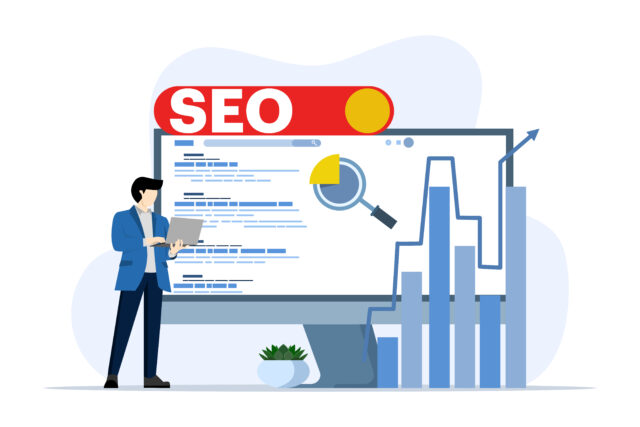Technical SEO is the backbone of any successful digital marketing strategy, ensuring that your website is not just visible but also accessible, fast, and efficient for both users and search engines. As search engine algorithms evolve, staying up-to-date with the latest technical SEO practices is more important than ever. This comprehensive Technical SEO Guide 2024 will walk you through the latest trends, best practices, and essential tips to optimize your site for the year ahead.
What is Technical SEO?
Technical SEO refers to optimizing your website’s infrastructure to improve search engine crawling, indexing, and overall performance. Unlike on-page SEO, which focuses on content, or off-page SEO, which deals with external signals like backlinks, technical SEO addresses the behind-the-scenes elements of your site. This includes site speed, mobile-friendliness, structured data, and secure connections—all crucial for achieving higher rankings and better user experiences.
Why Technical SEO Matters in 2024

As the digital landscape becomes more competitive, technical SEO continues to be a critical differentiator for websites. Google’s focus on user experience, mobile-first indexing, and new metrics like Core Web Vitals has made technical optimization a top priority for web admins. Failing to keep up with these changes can lead to missed opportunities in organic search traffic, reduced visibility, and, ultimately, lower revenue.
Technical SEO Guide 2024
With each passing year, the requirements for technical SEO become more sophisticated. Here’s what you need to know about the latest trends and strategies for 2024:
Website Crawling and Indexing
For your website to rank in search engines, it must first be crawled and indexed. This process involves search engine bots navigating your pages and adding them to their index.
- XML Sitemaps: Ensure you have a comprehensive XML sitemap that lists all important pages on your site. Submit it to Google Search Console to aid in the crawling process.
- Robots.txt File: Use the robots.txt file to control which pages you want search engines to access. Be cautious, as blocking important pages can hinder your SEO efforts.
- Crawl Errors: Regularly monitor Google Search Console for crawl errors and address them promptly to maintain your site’s health.
Site Architecture
Site architecture significantly influences how search engines understand and navigate your content. A well-structured site allows bots to discover your pages more efficiently and enhances user experience.
- Flat Site Architecture: Avoid having important pages buried deep within your site structure. A flat architecture (fewer clicks from the homepage) improves user navigation and search engine crawling.
- Breadcrumbs: Implement breadcrumb navigation to help users and search engines understand your site’s hierarchy and path to pages.
URL Optimization
URL structure is an often overlooked aspect of technical SEO. URLs should be clean, descriptive, and free of unnecessary parameters to improve both user experience and search engine readability.
- SEO-Friendly URLs: Use hyphens instead of underscores, keep URLs concise, and include target keywords where relevant.
- Consistent URL Structure: Maintain consistency in URL patterns to avoid confusion for users and search engines.
Mobile-First Indexing
With most internet traffic now coming from mobile devices, Google prioritizes mobile versions of websites when indexing. Optimizing for mobile is no longer optional; it’s a necessity.
- Responsive Design: Ensure your site uses a responsive design that adjusts seamlessly to different screen sizes and devices.
- Touch-Friendly Elements: Optimize buttons and links for touch navigation, ensuring that interactive elements are easily clickable without zooming in.
Page Speed and Core Web Vitals
Page speed has always been important, but with the introduction of Core Web Vitals, it’s now a direct ranking factor. Improving your site’s performance can significantly boost user satisfaction and search rankings.
- Largest Contentful Paint (LCP): Aim for an LCP of 2.5 seconds or less, which measures how quickly the main content of your page loads.
- First Input Delay (FID): Ensure FID is below 100 milliseconds, indicating that your site responds quickly to user interactions.
- Cumulative Layout Shift (CLS): Keep CLS below 0.1 to maintain visual stability and content, not shift unexpectedly.
HTTPS and Website Security
Security is another critical component of technical SEO. Search engines prioritize websites using HTTPS because they provide a safer browsing experience for users.
- SSL Certificates: Implement an SSL certificate to secure your site, boosting SEO and building visitor trust.
- Mixed Content Issues: Ensure all assets (images, scripts, etc.) are loaded over HTTPS to prevent mixed content errors.
XML Sitemaps and Robots.txt
Using XML sitemaps and robots.txt files effectively can guide search engines to your most valuable content, ensuring it’s appropriately indexed.
- Dynamic Sitemaps: Update your sitemaps regularly to reflect any new or removed pages.
- Blocking Unwanted Pages: Use the robots.txt file to prevent indexing of low-value pages, such as admin panels or duplicate content sections.
Canonicalization and Duplicate Content
Duplicate content can confuse search engines and dilute your SEO efforts. Proper canonicalization tells search engines which version of a page should be indexed.
- Canonical Tags: Implement canonical tags on pages that have similar content to avoid duplication penalties.
- URL Parameters: Use canonical tags or parameter handling in Google Search Console to guide bots on how to treat URL parameters.
Structured Data and Schema Markup
Structured data enhances your site’s visibility in search engine results by providing additional context about your content.
- Schema Markup: Use structured data to highlight key information, such as reviews, events, or product details, making your site eligible for rich snippets.
- Testing and Validation: Regularly test your schema markup using Google’s Rich Results Test to ensure it’s implemented correctly.
JavaScript SEO
JavaScript frameworks like React, Angular, and Vue are popular but can pose challenges for SEO. Ensuring that JavaScript content is crawlable is key to maintaining visibility.
- Server-Side Rendering (SSR): Use SSR or dynamic rendering to ensure search engines can access and index JavaScript content effectively.
- Lazy Loading: Implement lazy loading for images and content that’s not immediately visible to improve loading times without sacrificing SEO.
The Future of Technical SEO
As we move into 2024, technical SEO will continue to evolve, driven by new technologies, updates to search engine algorithms, and changes in user behavior. Staying proactive, regularly auditing your site, and implementing best practices will ensure your website remains optimized and competitive in the years ahead.
FAQs
What is the most important aspect of technical SEO? Ensuring your site is crawlable and indexable is fundamental to technical SEO, followed closely by optimizing page speed and mobile performance.
How does technical SEO impact page ranking? Technical SEO directly affects your site’s visibility in search engines, influencing loading speed, user experience, and crawl efficiency.
Why is site speed important in 2024? Site speed is crucial because it directly affects user experience and is a key component of Google’s Core Web Vitals, essential for SEO rankings.
How can I check the health of my site’s technical SEO? Use tools like Google Search Console, Lighthouse, and Screaming Frog to regularly audit your site and identify technical SEO issues.
What role does structured data play in technical SEO? Structured data helps search engines understand your content better, enabling enhanced search results with rich snippets that improve click-through rates.
Is HTTPS necessary for SEO? Yes, HTTPS is a ranking factor essential for protecting user data, building trust, and ensuring secure connections between your website and visitors.
Conclusion
Technical SEO is an ever-evolving field that demands ongoing attention and adaptation. As 2024 approaches, keeping up with the latest technical SEO best practices will be crucial for businesses seeking to enhance their online presence. By optimizing your site’s architecture, performance, and security, you can provide a seamless user experience and ensure your site ranks well in search engine results.

